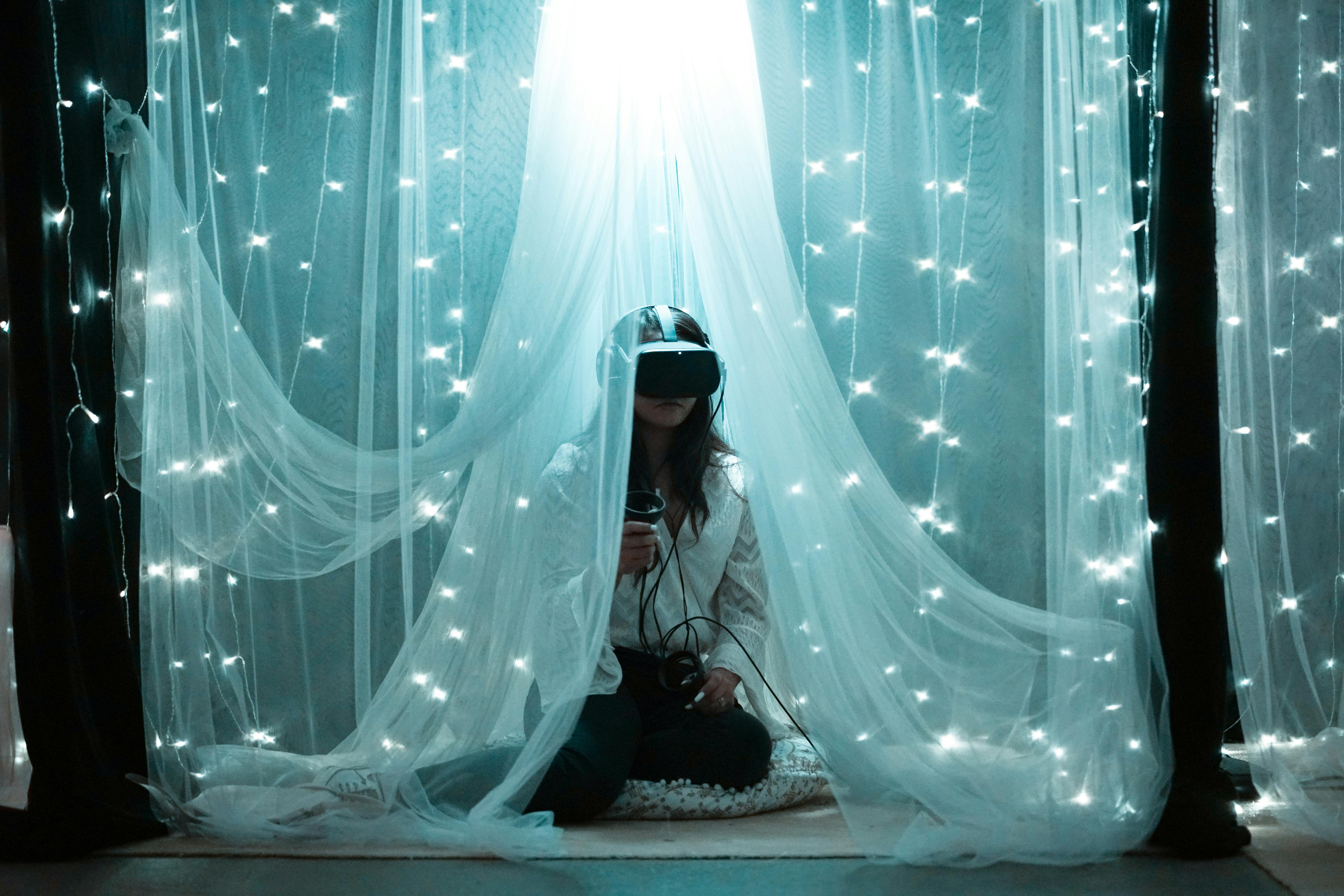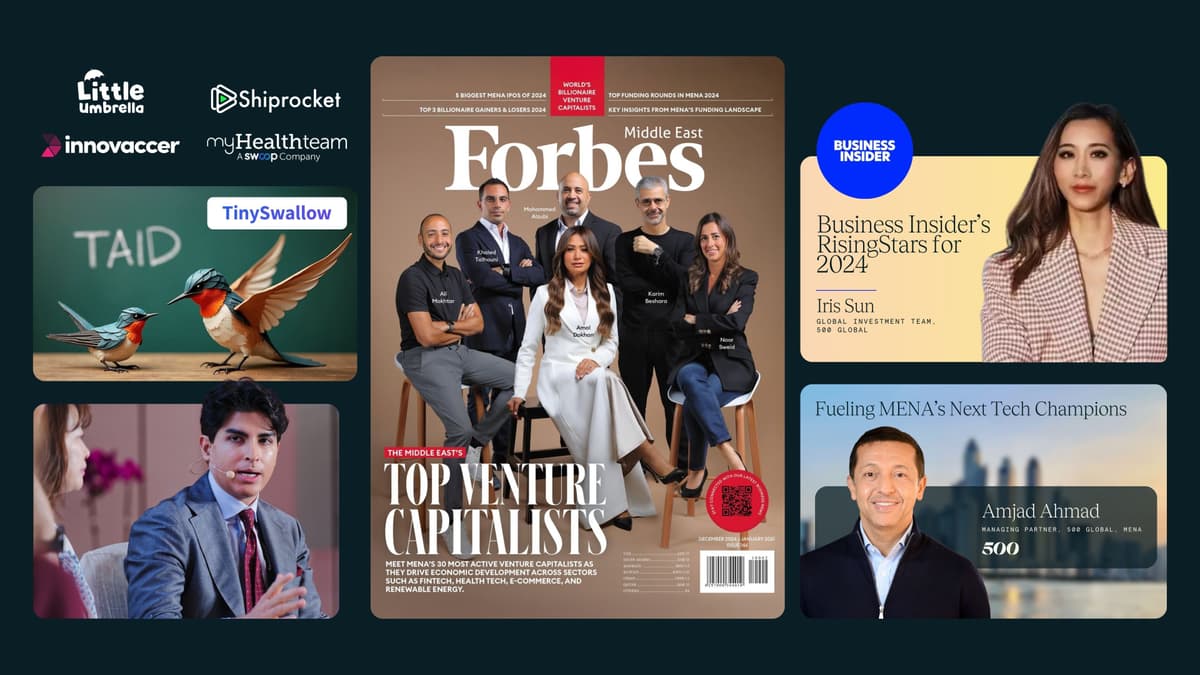Whether we realize it or not, mixed reality is becoming increasingly present in various aspects of our lives.
2022.01.27

500 Global Team

Photo credit: Barbara Zandoval on Unsplash
As I watched the National Basketball Association Finals this past July, I noticed Meta’s Oculus virtual reality headset prominently advertised courtside, repeatedly. While the company is no stranger to advertising its products, I was struck that Oculus chose to sponsor a mainstream sporting event. I shouldn’t have been. Just over a year ago Meta signed a multiyear sponsorship agreement with the NBA. You can now watch selected games entirely in virtual reality, putting you at the arena in a front row seat without leaving your living room. You can just about high five LeBron.
A quick primer on mixed reality: it’s a term that has been used increasingly over the past few years to encompass different forms of simulated immersive environments such as augmented reality (AR) and virtual reality (VR).
Now, many of us over the past several months have encountered discussion of the Metaverse. While the term is evolving, the Metaverse is far more encompassing than just AR and VR. The Metaverse allows you, your persona, and your digital goods to jump from one technology to another whether it be AR, VR, your PC, your phone, or your game console. The issue is that all of those technologies still need to be pieced together for the Metaverse to exist.
Whether we realize it or not, mixed reality is becoming on the other hand increasingly present in various aspects of our lives. AR allows you to superimpose digital objects onto real-world surroundings, while VR places you in an alternate environment where objects and backgrounds are entirely simulated. These technologies have been around for years, but up until very recently delivery mechanisms have been anything but friendly (think the difference between a rotary phone and what you now carry in your pocket). It’s also critical to note that AR and VR are not substitutes for one another. Each has a place and a function.
Here’s a summary of key markets:
Consumer: Gaming is hot. Gamers like truly immersive experiences and VR tends to dominate. Worldwide VR gaming revenues were $6.3 billion in 2020, a number that is expected to grow to $53 billion by 2028. In fact, VR arcades such as Sandbox VR have been springing up to help meet enormous group demand.
Mobile devices with limited AR experience have also met with success (see Pokemon Go). With a market this size, there’s a dogfight among VR headset providers with Oculus, HTC, HP, Sony, Valve, and others competing. Other consumer applications include retail, where AR predominates. Users can “try on” clothing or experiment with furniture design and placement by having a digital image of these goods placed on the body or in the home.
Industrial: AR is ideal to help solve problems and increase productivity on factory floors. Wearing a head mounted device, factory workers can conference in remote experts, and view critical documentation and data to fix machinery or improve existing workflows on the spot. AR is also suitable for training and onboarding employees directly on the factory floor with remote trainers. Microsoft HoloLens dominates here, with MagicLeap also participating. The world’s leading manufacturers have embraced AR, with Microsoft advertising Toyota, Mercedes, Airbus, Ford, and Lockheed Martin as customers. The Microsoft and MagicLeap devices are highly complex, retailing from $2,300 to $3,500 per headset.
Education: With both AR and VR students can immerse themselves in a range of topics – biology, astronomy, history, to name just a few. Want to tour of Greek ruins or museums? How about a tour of your digestive system? It’s all immersive and hands-on with head mounted devices, but mobile devices such as iPads and iPhones also play a large part in this market.
Military: The ability to track enemy positions and better target weaponry without taking your eyes off the battlefield lends itself to AR. Training and repair of equipment is also as helpful here as it is for the factory floor. Indeed, Microsoft recently signed a contract that could be worth up to $22 billion over 10 years with the U.S. Army to supply HoloLens devices and other services.
Healthcare: There are many different applications in healthcare. Surgical planning – both pre-operative and intra-operative – makes extensive use of AR. The quality of patient specific holograms is night and day when compared to conventional CT scans and MRIs. This can lead to efficiencies in the operating room, and can reduce unnecessary patient complications. VR has proven to be an extremely useful tool to manage chronic pain. By placing patients in alternate realities through VR, sensory experiences can be influenced in a way that makes treatment more effective. Training in healthcare makes use of both VR and AR. VR is useful for teaching surgical technique, while AR has proven useful for teaching anatomy.
Is mixed reality here for the foreseeable future? Besides Meta, Microsoft, one of the world’s most valuable companies, appears fully committed. It’s betting on it, after stumbling in the smartphone market. One of the world’s other most valuable companies, Apple reportedly has plans to significantly increase its presence in the market with a headset rumored to retail up to $3,000. Details remain sketchy, but Apple has already developed a software platform, ARKit, to build AR tools for its iOS devices.
Mixed reality is gaining ground now.
Guest Posts:
- NOTE: RICK BEBERMAN IS A GUEST CONTRIBUTOR AND ANY VIEWS OR OPINIONS REPRESENTED IN THE ABOVE POST ARE PERSONAL AND DO NOT REPRESENT THOSE OF 500 GLOBAL OR ANY OF ITS STAFF OR AFFILIATES UNLESS EXPLICITLY STATED. ALL CONTENT REPRESENTED ABOVE IS PROVIDED FOR INFORMATIONAL PURPOSES ONLY. 500 GLOBAL MAKES NO REPRESENTATIONS AS TO THE ACCURACY OR COMPLETENESS OF ANY INFORMATION CONTAINED IN THE ABOVE POST. NO LIABILITY CAN BE ACCEPTED FOR ANY ERROR OR OMISSIONS. UNDER NO CIRCUMSTANCES SHOULD ANY OF THE ABOVE CONTENT BE CONSTRUED AS LEGAL, TAX OR INVESTMENT ADVICE FROM 500 GLOBAL OR ANY OF ITS AFFILIATES. 500 GLOBAL DOES NOT GUARANTEE ANY FUTURE RESULTS FOR ANY DECISIONS MADE BASED IN WHOLE OR IN PART ON THE CONTENT OR INFORMATION CONTAINED IN THIS POST.
- UNDER NO CIRCUMSTANCES SHOULD ANY INFORMATION OR CONTENT IN THIS POST, BE CONSIDERED AS AN OFFER TO SELL OR SOLICITATION OF INTEREST TO PURCHASE ANY SECURITIES ADVISED BY 500 STARTUPS OR ANY OF ITS AFFILIATES OR REPRESENTATIVES. UNDER NO CIRCUMSTANCES SHOULD ANYTHING HEREIN BE CONSTRUED AS FUND MARKETING MATERIALS BY PROSPECTIVE INVESTORS CONSIDERING AN INVESTMENT INTO ANY 500 GLOBAL INVESTMENT FUND.




